Honeywell 2003 Annual Report Download - page 19
Download and view the complete annual report
Please find page 19 of the 2003 Honeywell annual report below. You can navigate through the pages in the report by either clicking on the pages listed below, or by using the keyword search tool below to find specific information within the annual report.-
 1
1 -
 2
2 -
 3
3 -
 4
4 -
 5
5 -
 6
6 -
 7
7 -
 8
8 -
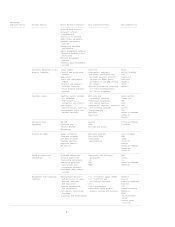 9
9 -
 10
10 -
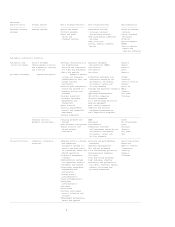 11
11 -
 12
12 -
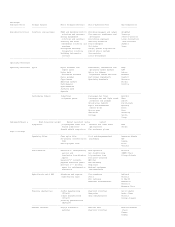 13
13 -
 14
14 -
 15
15 -
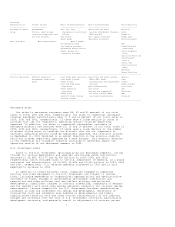 16
16 -
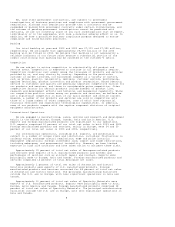 17
17 -
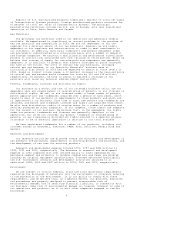 18
18 -
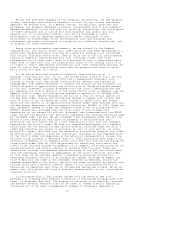 19
19 -
 20
20 -
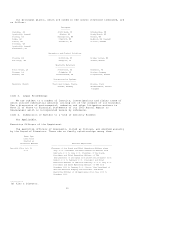 21
21 -
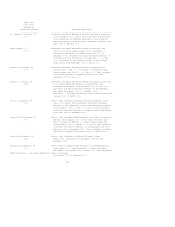 22
22 -
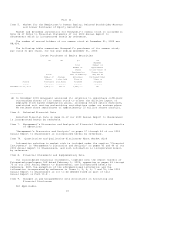 23
23 -
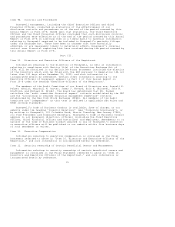 24
24 -
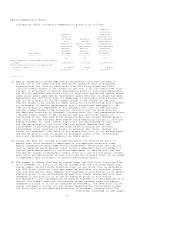 25
25 -
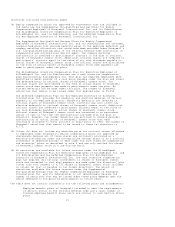 26
26 -
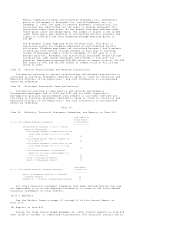 27
27 -
 28
28 -
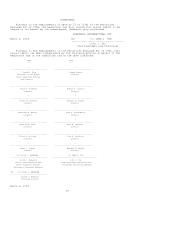 29
29 -
 30
30 -
 31
31 -
 32
32 -
 33
33 -
 34
34 -
 35
35 -
 36
36 -
 37
37 -
 38
38 -
 39
39 -
 40
40 -
 41
41 -
 42
42 -
 43
43 -
 44
44 -
 45
45 -
 46
46 -
 47
47 -
 48
48 -
 49
49 -
 50
50 -
 51
51 -
 52
52 -
 53
53 -
 54
54 -
 55
55 -
 56
56 -
 57
57 -
 58
58 -
 59
59 -
 60
60 -
 61
61 -
 62
62 -
 63
63 -
 64
64 -
 65
65 -
 66
66 -
 67
67 -
 68
68 -
 69
69 -
 70
70 -
 71
71 -
 72
72 -
 73
73 -
 74
74 -
 75
75 -
 76
76 -
 77
77 -
 78
78 -
 79
79 -
 80
80 -
 81
81 -
 82
82 -
 83
83 -
 84
84 -
 85
85 -
 86
86 -
 87
87 -
 88
88 -
 89
89 -
 90
90 -
 91
91 -
 92
92 -
 93
93 -
 94
94 -
 95
95 -
 96
96 -
 97
97 -
 98
98 -
 99
99 -
 100
100 -
 101
101 -
 102
102 -
 103
103 -
 104
104 -
 105
105 -
 106
106 -
 107
107 -
 108
108 -
 109
109 -
 110
110 -
 111
111 -
 112
112 -
 113
113 -
 114
114 -
 115
115 -
 116
116 -
 117
117 -
 118
118 -
 119
119 -
 120
120 -
 121
121 -
 122
122 -
 123
123 -
 124
124 -
 125
125 -
 126
126 -
 127
127 -
 128
128 -
 129
129 -
 130
130 -
 131
131 -
 132
132 -
 133
133 -
 134
134 -
 135
135 -
 136
136 -
 137
137 -
 138
138 -
 139
139 -
 140
140 -
 141
141 -
 142
142 -
 143
143 -
 144
144 -
 145
145 -
 146
146 -
 147
147 -
 148
148 -
 149
149 -
 150
150 -
 151
151 -
 152
152 -
 153
153 -
 154
154 -
 155
155 -
 156
156 -
 157
157 -
 158
158 -
 159
159 -
 160
160 -
 161
161 -
 162
162 -
 163
163 -
 164
164 -
 165
165 -
 166
166 -
 167
167 -
 168
168 -
 169
169 -
 170
170 -
 171
171 -
 172
172 -
 173
173 -
 174
174 -
 175
175 -
 176
176 -
 177
177 -
 178
178 -
 179
179 -
 180
180 -
 181
181 -
 182
182 -
 183
183 -
 184
184 -
 185
185 -
 186
186 -
 187
187 -
 188
188 -
 189
189 -
 190
190 -
 191
191 -
 192
192 -
 193
193 -
 194
194 -
 195
195 -
 196
196 -
 197
197 -
 198
198 -
 199
199 -
 200
200 -
 201
201 -
 202
202 -
 203
203 -
 204
204 -
 205
205 -
 206
206 -
 207
207 -
 208
208 -
 209
209 -
 210
210 -
 211
211 -
 212
212 -
 213
213 -
 214
214 -
 215
215 -
 216
216 -
 217
217 -
 218
218 -
 219
219 -
 220
220 -
 221
221 -
 222
222 -
 223
223 -
 224
224 -
 225
225 -
 226
226 -
 227
227 -
 228
228 -
 229
229 -
 230
230 -
 231
231 -
 232
232 -
 233
233 -
 234
234 -
 235
235 -
 236
236 -
 237
237 -
 238
238 -
 239
239 -
 240
240 -
 241
241 -
 242
242 -
 243
243 -
 244
244 -
 245
245 -
 246
246 -
 247
247 -
 248
248 -
 249
249 -
 250
250 -
 251
251 -
 252
252 -
 253
253 -
 254
254 -
 255
255 -
 256
256 -
 257
257 -
 258
258 -
 259
259 -
 260
260 -
 261
261 -
 262
262 -
 263
263 -
 264
264 -
 265
265 -
 266
266 -
 267
267 -
 268
268 -
 269
269 -
 270
270 -
 271
271 -
 272
272 -
 273
273 -
 274
274 -
 275
275 -
 276
276 -
 277
277 -
 278
278 -
 279
279 -
 280
280 -
 281
281 -
 282
282 -
 283
283 -
 284
284 -
 285
285 -
 286
286 -
 287
287 -
 288
288 -
 289
289 -
 290
290 -
 291
291 -
 292
292 -
 293
293 -
 294
294 -
 295
295 -
 296
296 -
 297
297 -
 298
298 -
 299
299 -
 300
300 -
 301
301 -
 302
302 -
 303
303 -
 304
304 -
 305
305 -
 306
306 -
 307
307 -
 308
308 -
 309
309 -
 310
310 -
 311
311 -
 312
312 -
 313
313 -
 314
314 -
 315
315 -
 316
316 -
 317
317 -
 318
318 -
 319
319 -
 320
320 -
 321
321 -
 322
322 -
 323
323 -
 324
324 -
 325
325 -
 326
326 -
 327
327 -
 328
328 -
 329
329 -
 330
330 -
 331
331 -
 332
332 -
 333
333 -
 334
334 -
 335
335 -
 336
336 -
 337
337 -
 338
338 -
 339
339 -
 340
340 -
 341
341 -
 342
342 -
 343
343 -
 344
344 -
 345
345 -
 346
346 -
 347
347 -
 348
348 -
 349
349 -
 350
350 -
 351
351 -
 352
352 -
 353
353 -
 354
354 -
 355
355 -
 356
356 -
 357
357 -
 358
358 -
 359
359 -
 360
360 -
 361
361 -
 362
362 -
 363
363 -
 364
364 -
 365
365 -
 366
366 -
 367
367 -
 368
368 -
 369
369 -
 370
370 -
 371
371 -
 372
372 -
 373
373 -
 374
374 -
 375
375 -
 376
376 -
 377
377 -
 378
378 -
 379
379 -
 380
380 -
 381
381 -
 382
382 -
 383
383 -
 384
384 -
 385
385 -
 386
386 -
 387
387 -
 388
388 -
 389
389 -
 390
390 -
 391
391 -
 392
392 -
 393
393 -
 394
394 -
 395
395 -
 396
396 -
 397
397 -
 398
398 -
 399
399 -
 400
400 -
 401
401 -
 402
402 -
 403
403 -
 404
404 -
 405
405 -
 406
406 -
 407
407 -
 408
408 -
 409
409 -
 410
410 -
 411
411 -
 412
412 -
 413
413 -
 414
414 -
 415
415 -
 416
416 -
 417
417 -
 418
418 -
 419
419 -
 420
420 -
 421
421 -
 422
422 -
 423
423 -
 424
424 -
 425
425 -
 426
426 -
 427
427 -
 428
428 -
 429
429 -
 430
430 -
 431
431 -
 432
432 -
 433
433 -
 434
434 -
 435
435 -
 436
436 -
 437
437 -
 438
438 -
 439
439 -
 440
440 -
 441
441 -
 442
442 -
 443
443 -
 444
444
 |
 |
We are and have been engaged in the handling, manufacture, use and disposal
of many substances classified as hazardous or toxic by one or more regulatory
agencies. We believe that, as a general matter, our policies, practices and
procedures are properly designed to prevent unreasonable risk of environmental
damage and personal injury, and that our handling, manufacture, use and disposal
of these substances are in accord with environmental and safety laws and
regulations. It is possible, however, that future knowledge or other
developments, such as improved capability to detect substances in the
environment or increasingly strict environmental laws and standards and
enforcement policies, could bring into question our handling, manufacture, use
or disposal of these substances.
Among other environmental requirements, we are subject to the federal
superfund law, and similar state laws, under which we have been designated as a
potentially responsible party that may be liable for cleanup costs associated
with various hazardous waste sites, some of which are on the U.S. Environmental
Protection Agency's superfund priority list. Although, under some court
interpretations of these laws, there is a possibility that a responsible party
might have to bear more than its proportional share of the cleanup costs if it
is unable to obtain appropriate contribution from other responsible parties, we
have not had to bear significantly more than our proportional share in multi-
party situations taken as a whole.
In the matter entitled Interfaith Community Organization, et al. v.
Honeywell International Inc., et al., the United States District Court for the
District of New Jersey held in May 2003 that a predecessor Honeywell site
located in Jersey City, New Jersey constituted an imminent and substantial
endangerment and ordered Honeywell to conduct the excavation and transport for
offsite disposal of approximately one million tons of chromium residue present
at the site. Honeywell strongly disagrees with the Court's determinations and
has appealed the Court's decision to the Third Circuit Court of Appeals. Per the
Appeals Court's order, the parties are engaged in mediation. In October 2003,
the District Court denied Honeywell's motion for a stay of certain aspects of
its May 2003 order, and we are considering whether to appeal such ruling. The
site at issue is one of twenty-one sites located in Jersey City, New Jersey
which are the subject of an Administrative Consent Order (ACO) entered into with
the New Jersey Department of Environmental Protection (NJDEP) in 1993. Under the
ACO, Honeywell agreed to study and remediate these sites in accordance with
NJDEP's directions, provided that the total costs of such studies and
remediation do not exceed $60 million. Honeywell has cooperated with the NJDEP
under the ACO and believes that decisions regarding site cleanups should be made
by the NJDEP under the ACO. We are confident that proceeding under the ACO will
ensure a safe remediation and allow the property to be placed back into
productive use much faster and at a cost significantly less than the remedies
required by the Court's order. We have not completed development of a remedial
action plan for the excavation and offsite disposal directed under the Court's
order and therefore are unable to estimate the cost of such actions. At trial,
plaintiff's expert testified that the excavation and offsite disposal cost might
be $400 million. However, there are significant variables in the implementation
of the Court's order and depending on the method of implementation chosen, the
estimate could increase or decrease. Prior to 2003, provisions were made in our
financial statements as to remedial costs consistent with the ACO and during the
three months ended June 30, 2003 we provided for additional costs which are
likely to be incurred during the pendency of our appeal, which provisions do not
assume excavation and offsite removal of chromium from the site. There are
alternative outcomes and remedies beyond the scope of the ACO that could result
from the remanding, reversal or replacement of the Court's decision and order.
At this time, we can neither identify a probable alternative outcome nor
reasonably estimate the cost of an alternative remedy. Although we expect the
Court's decision and order to be remanded, reversed or replaced, should the
remedies prescribed in the Court's decision and order ultimately be upheld, such
outcome could have a material adverse impact on our consolidated results of
operations or operating cash flows in the periods recognized or paid. We do not
expect that this matter will have a material adverse effect on our consolidated
financial position.
In accordance with a 1992 consent decree with the State of New York,
Honeywell is studying environmental conditions in and around Onondaga Lake (the
Lake), in Syracuse, New York. The purpose of the study is to identify, evaluate
and propose remedial measures that can be taken to remedy historic industrial
contamination in the Lake. A predecessor company to Honeywell operated a
10
